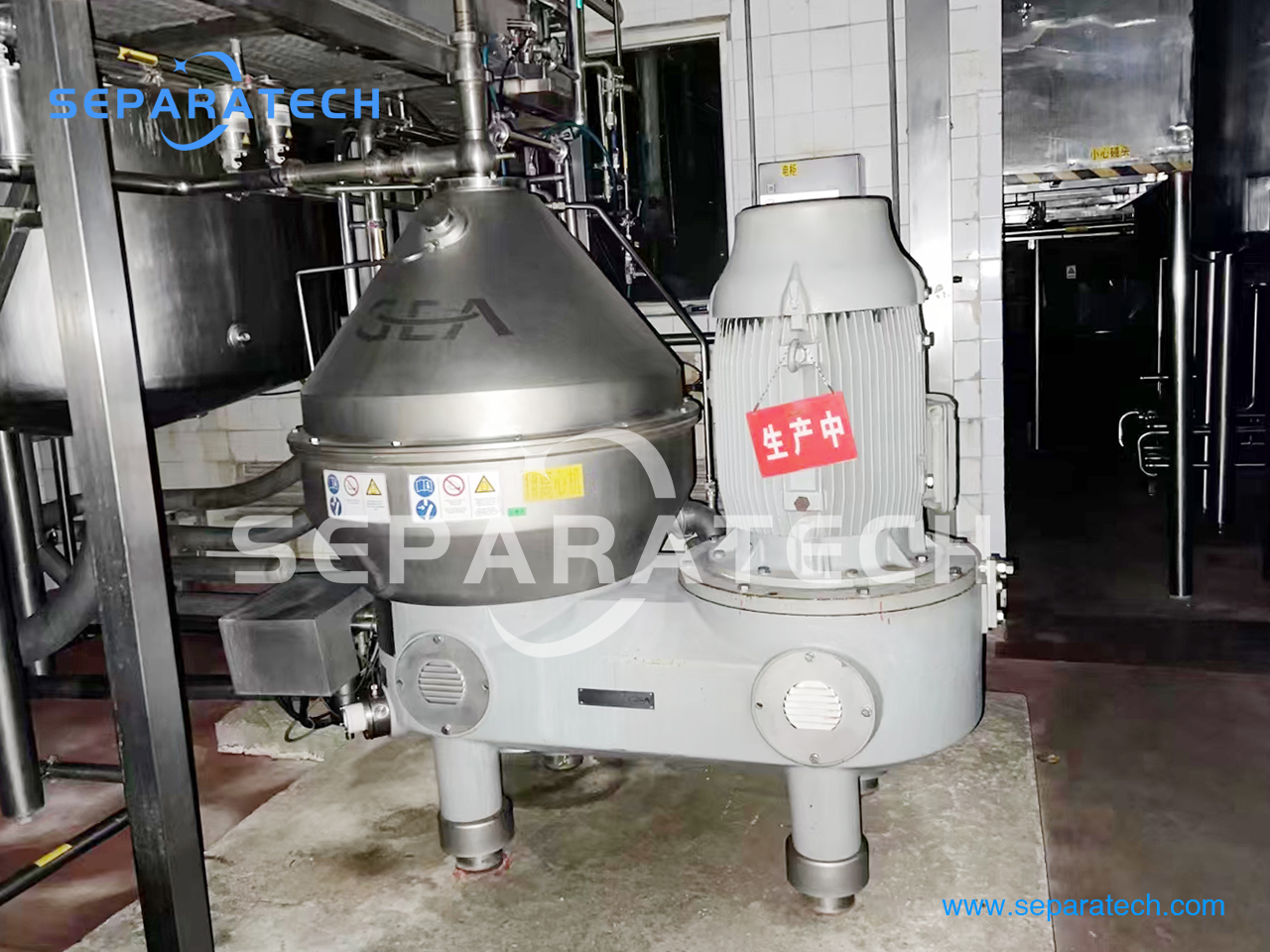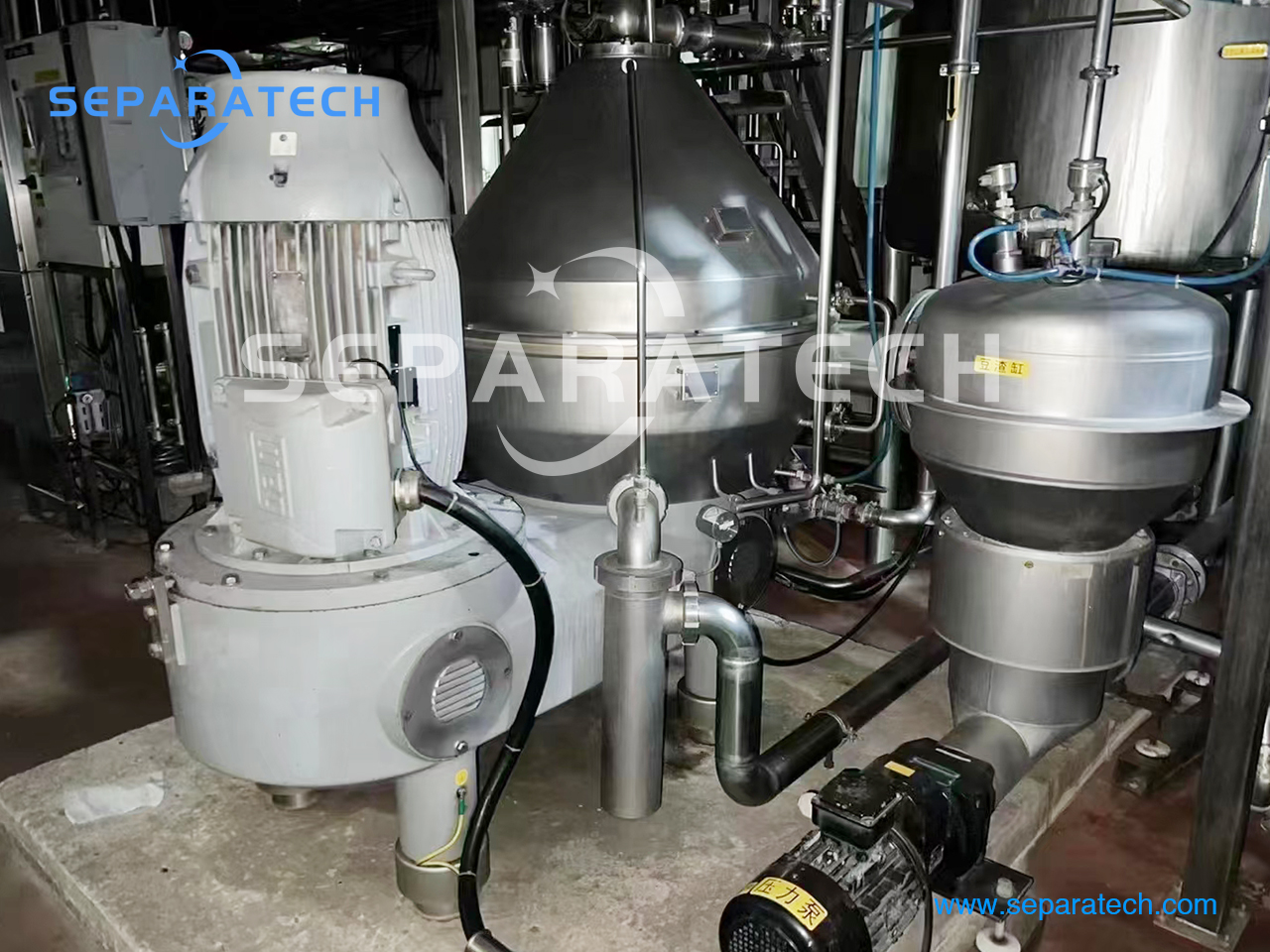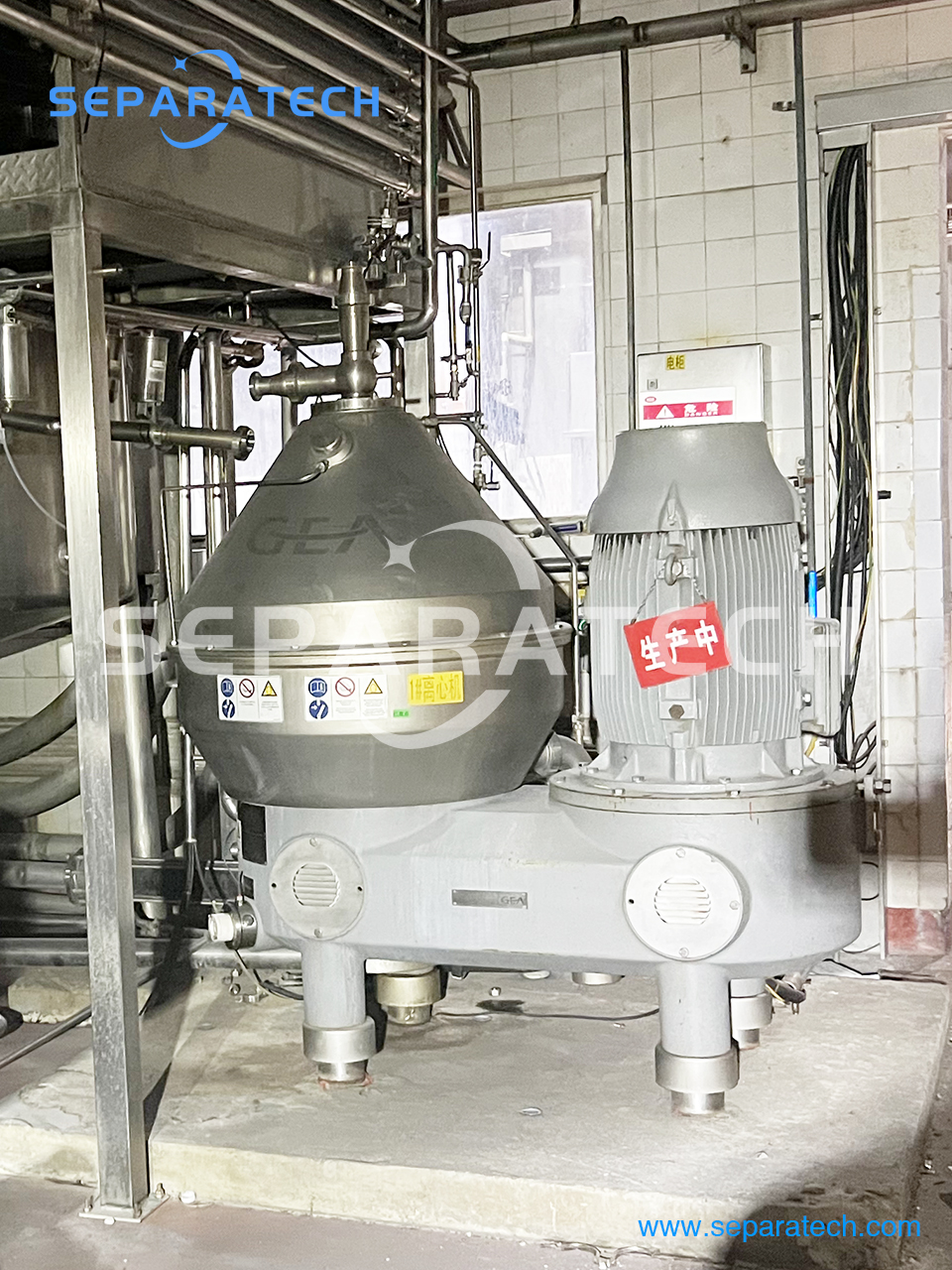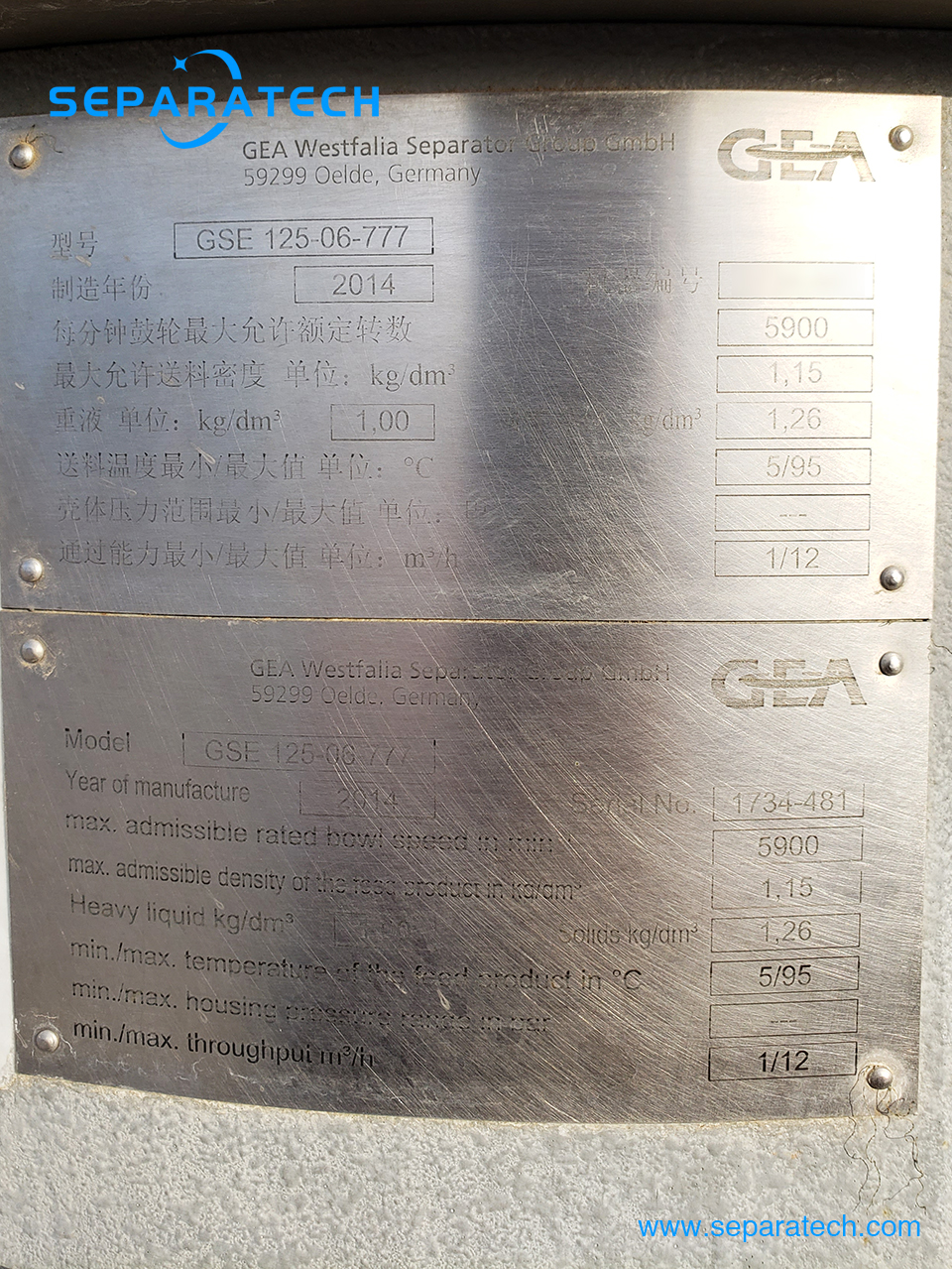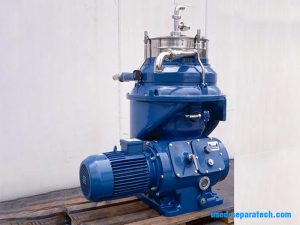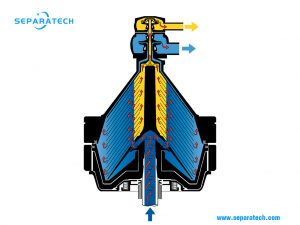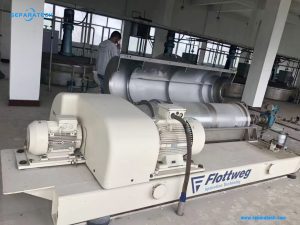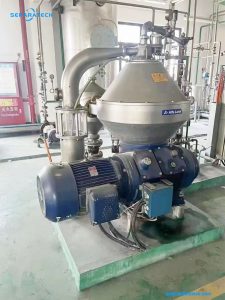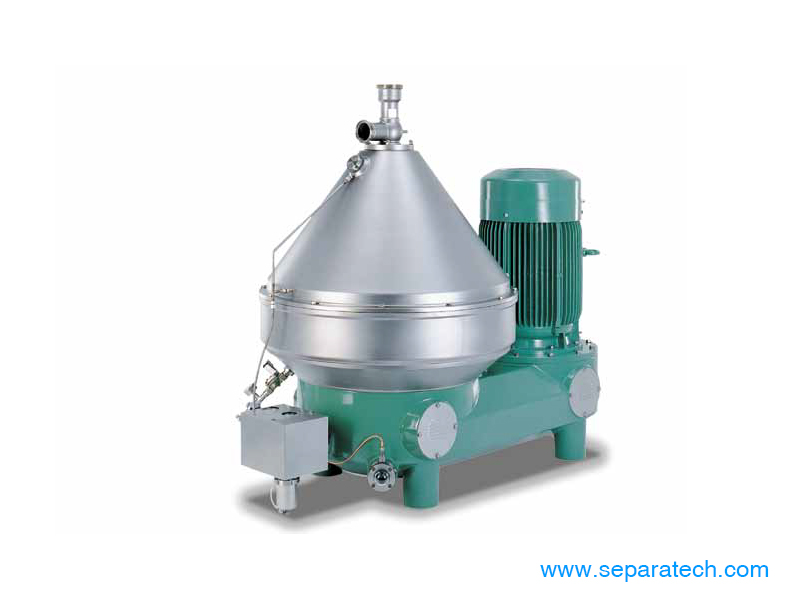
GSE125-06-777 Disc Separator Applications
GSE125-06-777 Disc Separator is special designed for the clarification of beverages.
In addition to wine, citrus, tea and coffee the Clara range is suitable for a number of other applications, such as:
– Juice from apples, berries and other deciduous fruits
– Tropical juices like passion fruit, mango and pineapple
– Various industrial fermentation applications
The self-cleaning bowl makes the machine suitable for fully automatic cleaning in-place. Opening and closing of the bowl for discharging the solids takes place hydraulically using water.
The feed and discharge are in a closed system. The product feed and discharges in the bowl are hydro hermetically sealed and do not feature mechanical seals. The feed and discharge are rated to suit the respective application.
The GSE125-06-777 Disc Separator is driven by a 3-phase AC motor via a low-maintenance flat belt. All product-contacting parts are made of stainless steel; the gaskets conform to the requirements of food operations.
Technical specifications
– Manufacturing year: 2014
– Hydraulic capacity: 50,000 l/h
– Bowl speed: 5900 rpm
– Motor: 45 Kw
– Process temperature range: 5–95°C
Operating principles
Separation takes place inside a rotating bowl in the GSE125-06-777 Disc Separator. The feed is introduced to the rotating centrifuge bowl from the top via a stationary inlet pipe , and is accelerated in the distributor, before entering the disc stack. The distributor is designed especially to ensure smooth acceleration of the feed liquid. The separation of liquid-solids takes place between the discs, with the liquid phase moving through the disc stack to the centre and is led to the paring chamber, where it is pumped out of the rotor by means of a built-in centripetal pump. The solids is collected in the periphery, from where it is discharged intermittently into the solids collecting cover.
The solids discharge is achieved by a hydraulic system which at preset suitable intervals forces the sliding piston to drop down and thus opening the solids ports at the bowl periphery.
